
Trial and Error: Working with Mockups
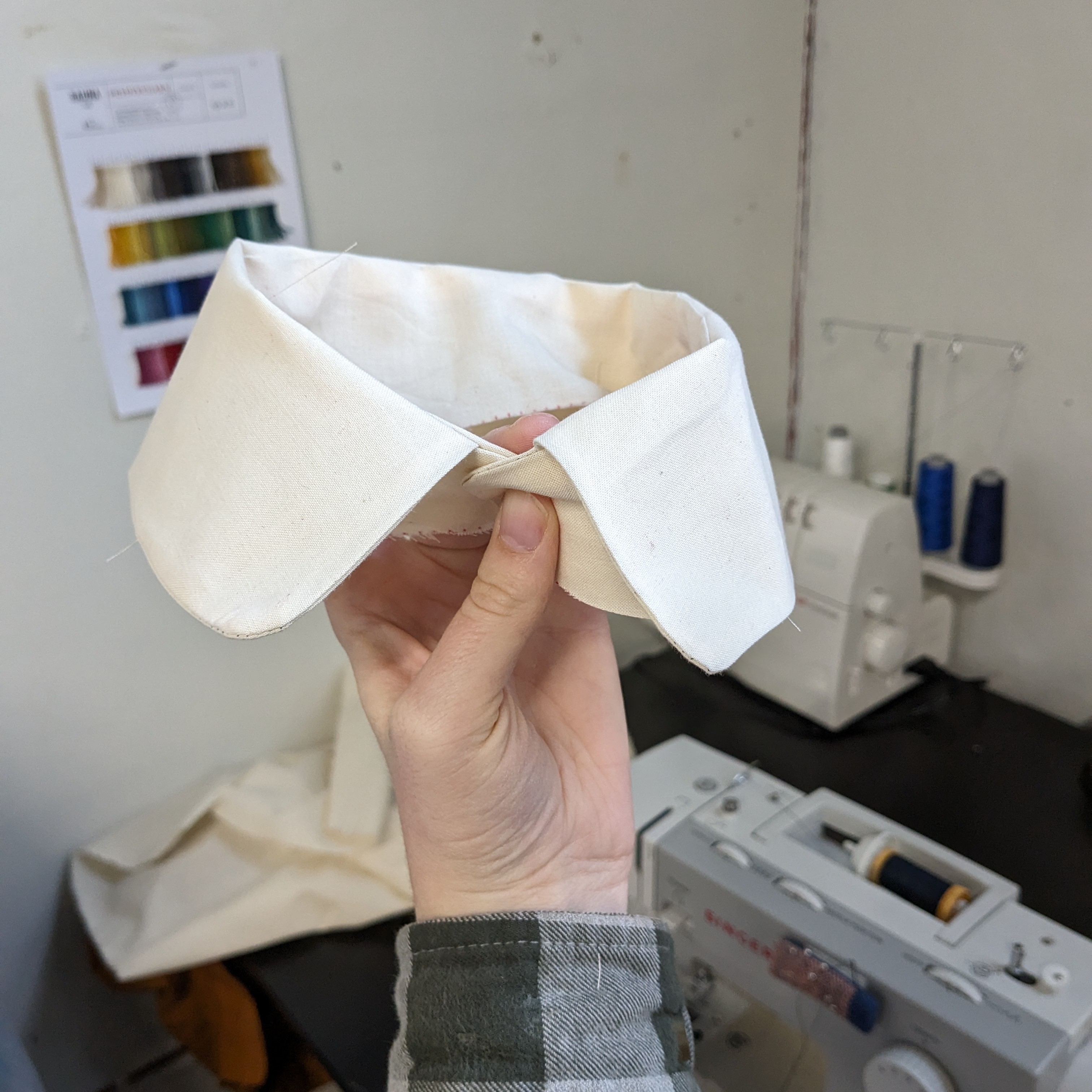
Why make a sample when you can get straight to the fun part? In this post, Caroline Feyling writes about an integral part of the sewing process: working with mockups.
Have you ever started a new project and thought, “I don’t need to make a sample first,” only to regret it? I am right there with you. Why make a sample when you can get straight to the fun part? I often find that I can get away with skipping my samples, but there is one craft discipline where it is absolutely necessary: sewing pattern drafting.
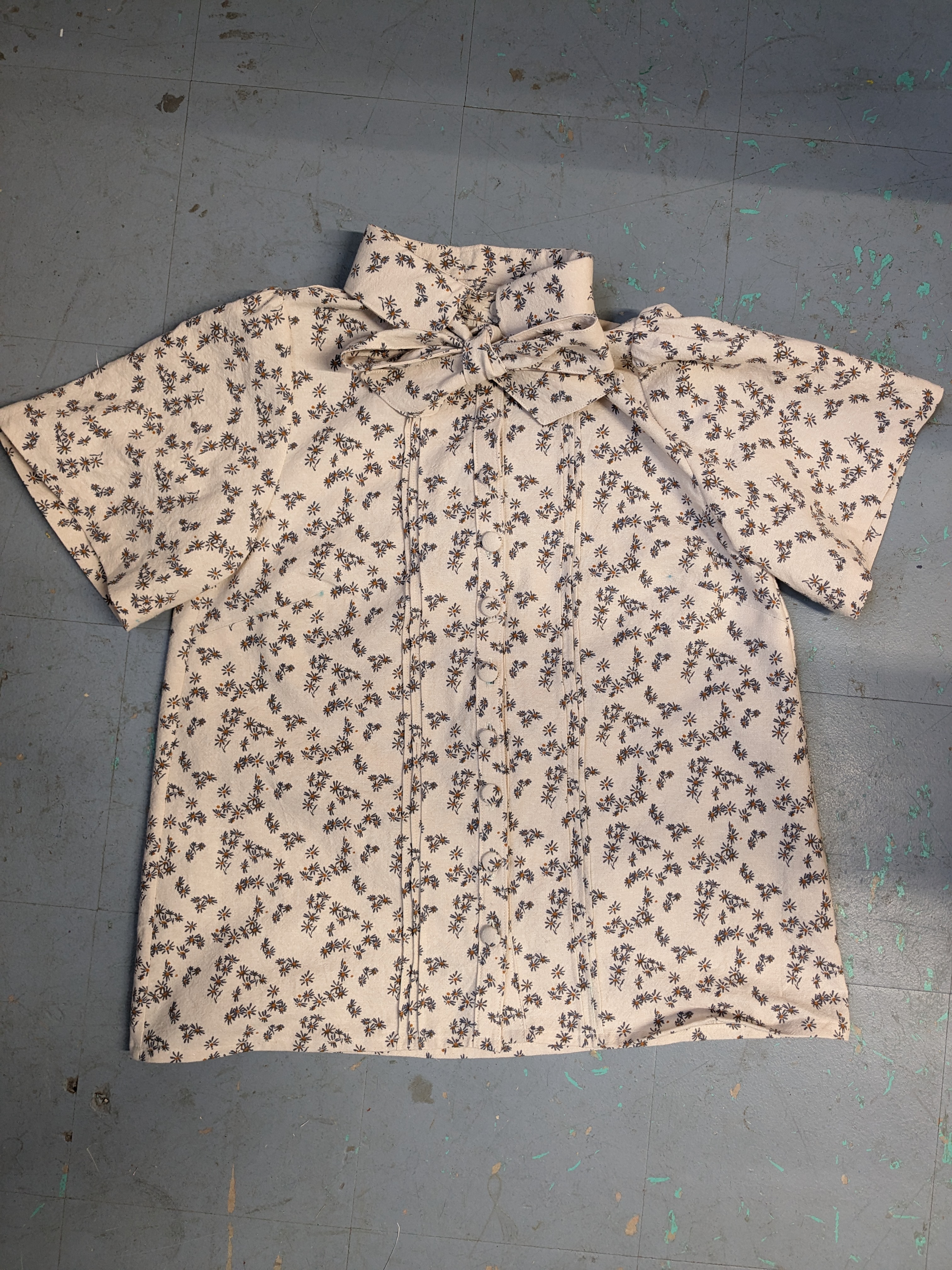
Pattern drafting is the art of creating pattern pieces that will later be sewn into a completed piece. There are three main methods to doing this: draping, flat patterning, and taking a pattern from an existing garment. No matter the method that is used, creating a mockup is a requirement in the pattern making process. The mockup allows you to check the fit of the garment and identify any stylistic changes that need to be made. It is a very useful tool when developing a pattern but it does mean that you have to sew the piece twice.
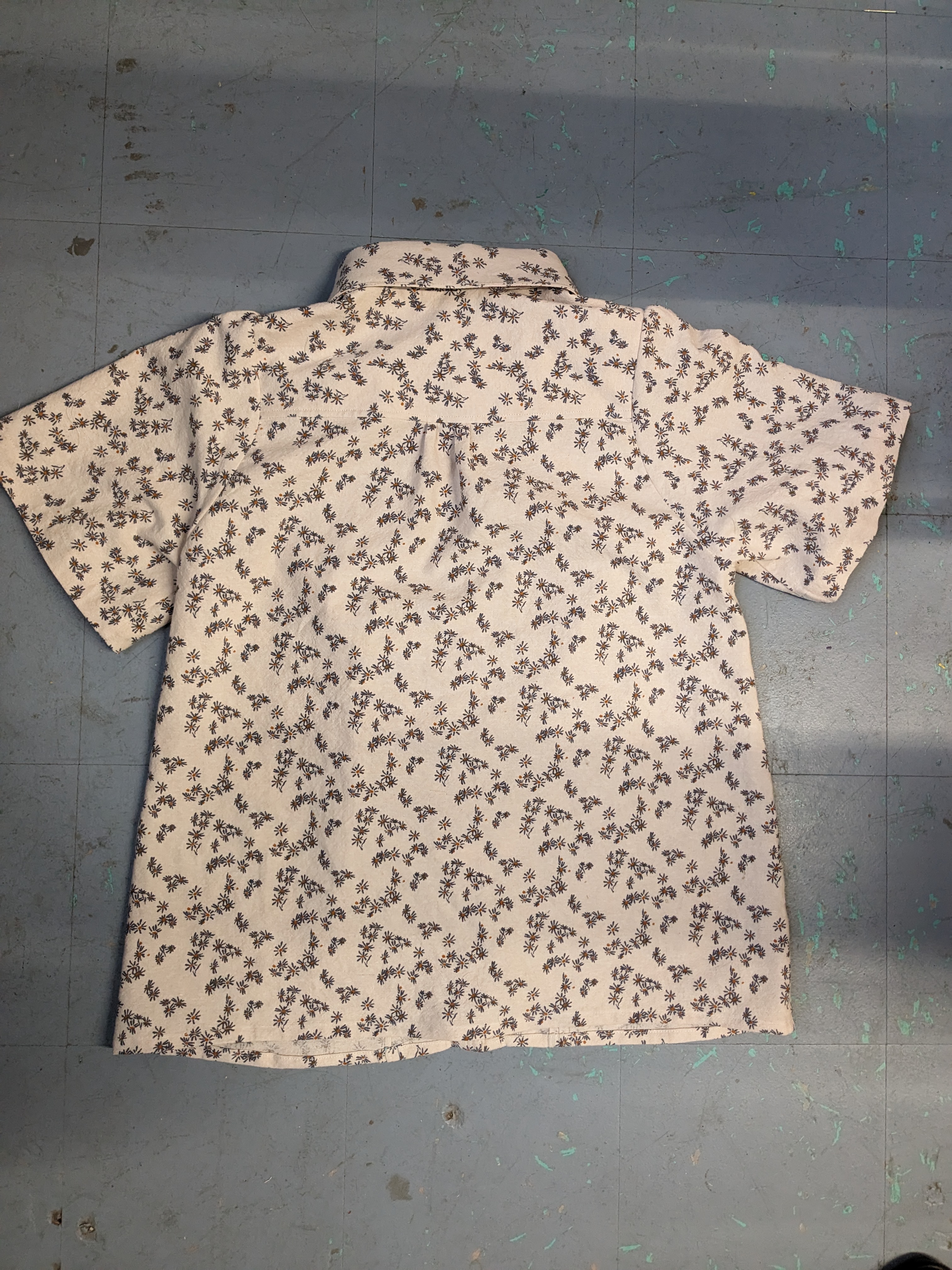
Leading up to the end of the 2023, I was working on drafting a pattern for a button up from a garment I already owned. It was my first time patterning from an existing garment as well as my first time sewing a structured shirt collar. This meant that the mockup process was extra important.

To begin the project, I traced every piece of the existing shirt onto paper and then trued up my lines with drafting rulers. The next step was adding seam allowances and necessary pattern marks. To test that my pattern went together as intended, I cut all my pieces out of a medium weight cotton fabric called muslin. After cutting out the pieces, I began sewing together the pieces in the same way as planned for the final. I took care to maintain my seam allowances but did not fully finish the garment in order to save time and labor.
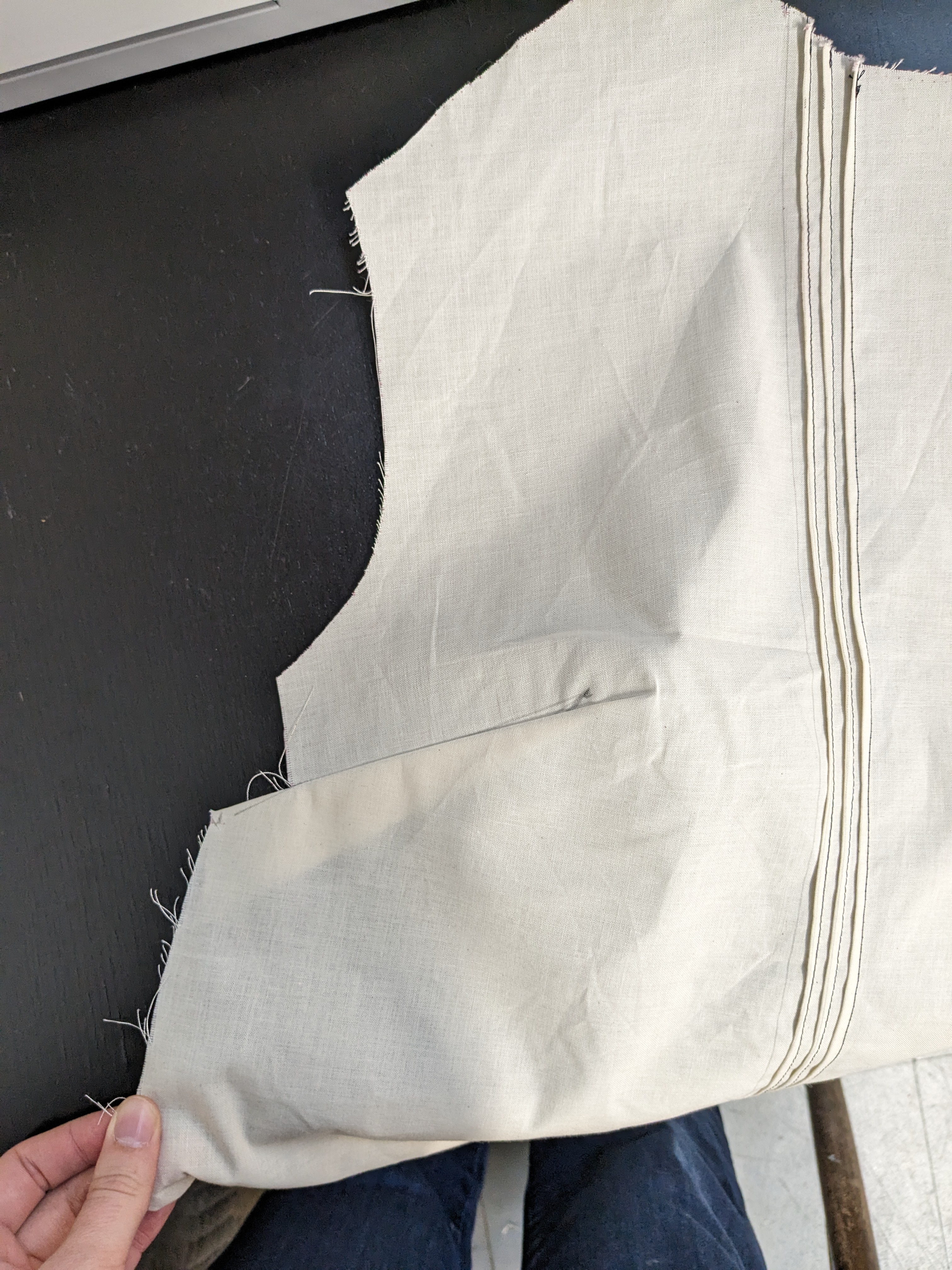
When it came time to do my fitting, I discovered that my garment was extremely tight in the armpits and the bust dart did not lie flat. To remedy this, I ended up enlarging the arm hold and shifting the dart placement down. This gave the relaxed fit that I was aiming for. The other major change that I made was lowering the neckline as it felt very tight on the mockup. I then transferred the alterations I had made to my paper pattern and proceeded to sew my final garment.
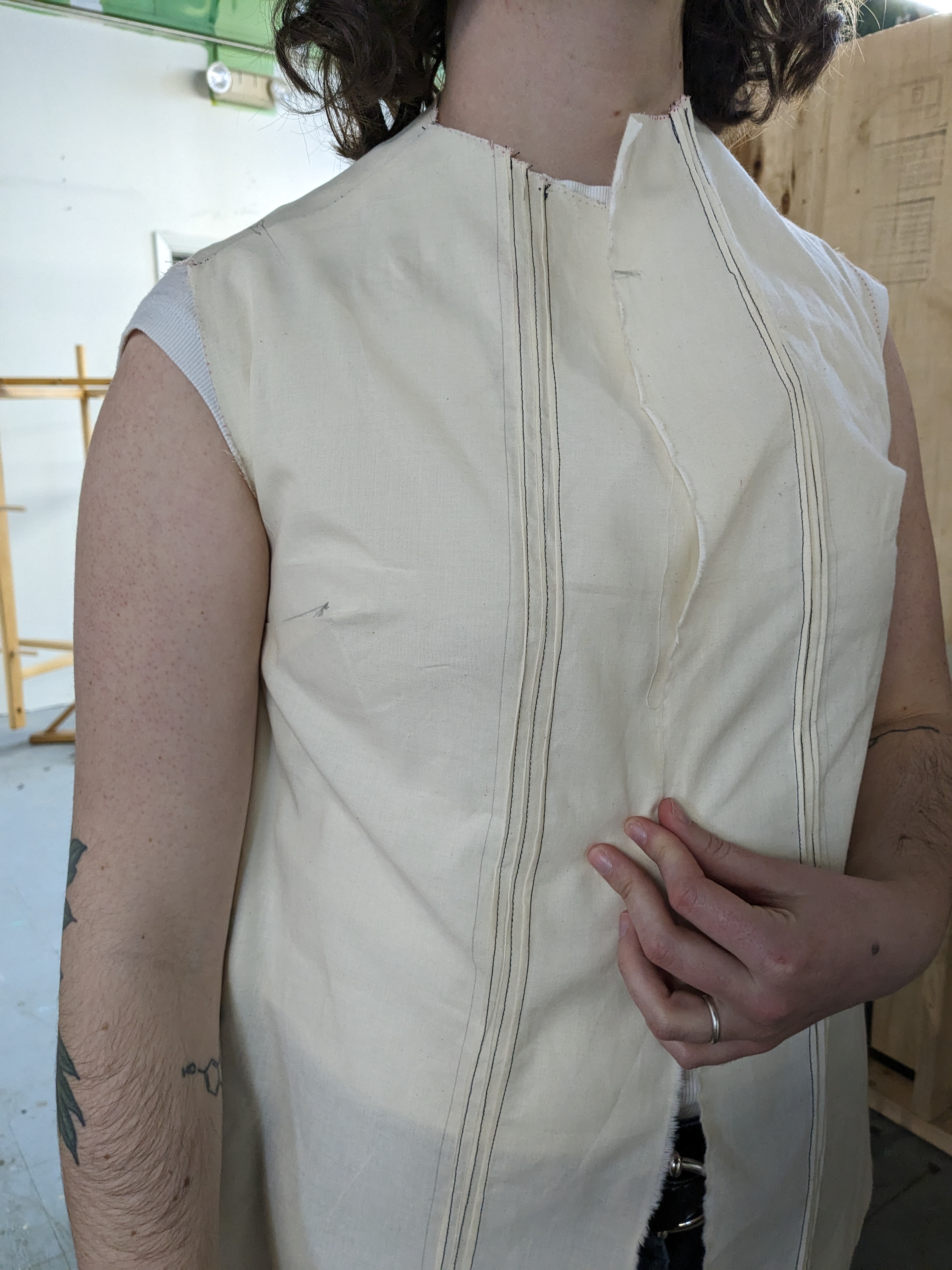
While I am happy with the overall result of this project, I wish I had taken the time to create a second mockup before continuing to the final piece. The changes during the alteration phase were fairly drastic and I could have benefitted from another round of fittings. The main area that could be improved upon was the neckline. The final collar ended up being slightly looser than desired and did not line up as intended. Most of it is concealed with a bow so all is well! But this serves as a reminder that a project can only benefit from taking the time to work out the kinks. Maybe mockups aren’t so bad after all!